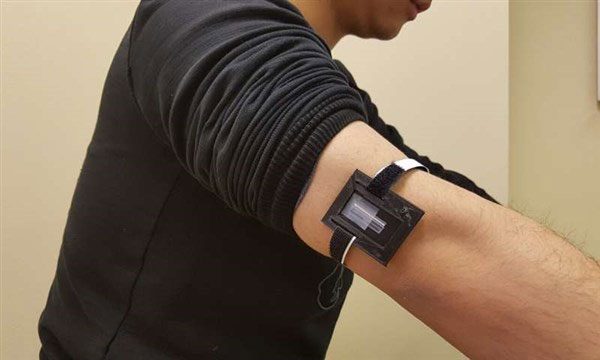The role of lactate sensors in sports physiology
More and more lactate-sensing wearables are available to assist with exercise.
However, this technology has sparked a lot of debate about its usefulness in tracking sweat during workouts . According to an article in ACS Sensors, the journal of the American Chemical Society, experts are focusing on whether the technology can improve performance while preventing injury to athletes.

Temperature and pH often affect lactate electrochemical readings.
Co-authors of the paper are Gaston Crespo and Maria Cuartero - Assistant Professor at KTH Royal Institute of Technology (Sweden). The lactate-sensing technology is touted as being able to determine in real time whether an athlete is exerting too much or too little, the two researchers say. However, the reality is not so.
'There is not enough evidence of a link between athletic performance and lactate levels. There is also a lack of understanding of the relationship between sweat lactate and blood lactate, as well as the relationship with other biomarkers,' explains Crespo.
Lactate, or lactic acid , is a by-product of anaerobic respiration, when muscle cells convert glucose into energy without oxygen. Taking blood samples from athletes helps scientists and sports coaches assess the fitness and performance status of athletes.
According to the researchers, there is no widely accepted approach to sweat collection and analysis that provides reliable data to determine the correlation between sweat lactate and blood lactate.
The paper presents an analysis of the current state of lactate electrochemical sensors integrated in wearable devices. Also, list the key features that need to be improved or changed to achieve success in the technology.
Temperature and pH often affect lactate electrochemical readings. That, in turn, results in measurements that are much lower than expected. So the researchers developed a way to isolate lactate in sweat using a specially designed polymer layer on the outside of the sensor.
The polymer causes the enzyme in the sensor to not react with anything but lactate. At the same time, it allows the sensor to read higher lactate concentrations than typical electrochemical sensors do.
The technology is being developed through a new company, IDRO BV, says researcher Crespo. In addition, researchers at the University of Dalarna (Sweden) are using this technology to conduct tests on the body.
In it, blood and sweat measurements correlate with athletes' athletic performance. In addition, sweat samples are collected to confirm the sensor's performance.
- Excessive tattoo
- New discovery of the relationship between lactate and cancer
- Sports jacket and coach role
- This is why eating oysters helps increase the physiological power of men
- Smart Led shoes automatically glow when jumping
- The reason why every country is good at certain sports
- 3 sports to help you live 5-10 years longer
- Developed ultra-thin, transparent, ultra-accurate pressure sensors
- Playing sports makes women smarter
- Sensors monitor temperature and humidity around plants
- Sports history 'The most punched kick' in the world
- Controversy: No or no caffeine in sports
 13 causes of non-itchy rash
13 causes of non-itchy rash How the mouse with human ears changed the world?
How the mouse with human ears changed the world? The truth about 'fried rice syndrome!
The truth about 'fried rice syndrome! What is dental implant?
What is dental implant?